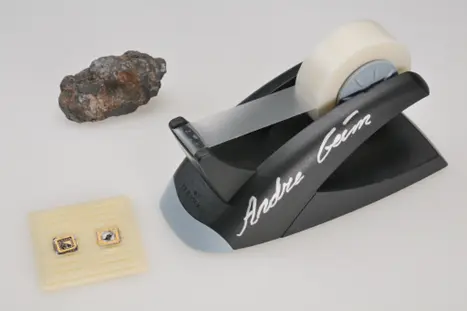As a young scientist, I know what struggling in science feels like. The path can sometimes be lonely, demanding, or simply hard. In those moments, I find hearing about others’ paths in science helpful. The same challenging situations I faced were also part of other people’s paths. And if they managed to overcome them, so can I. In this article, I highlight some stories about serendipity and science that might give a new perspective to your research and why failing an experiment may not be the worst thing.
What Makes Scientists Successful?
Sometimes we may think that paths in science are linear. Starting with undergraduate studies in a STEM field, leading quickly to graduate school… publishing, publishing, and more publishing… securing new positions, ultimately establishing your own research team, making a significant discovery, and achieving recognition through various prizes. But the truth is that many scientists considered “successful” do not follow that trend.
Have you ever heard about serendipity? It is the concept that represents all the “unplanned fortunate discoveries”. Serendipity can play a crucial role in research, providing new perspectives and avenues of inquiry that may have been overlooked in a more structured and systematic approach. This allows us to explore new fresh ideas and test unconventional hypotheses that could lead to breakthroughs in our knowledge and significant advancements in science.
Below are some examples of researchers who could have given up but didn’t and reaped the rewards later.
A Deadly Discovery (for Bacteria)
A prime example of serendipity in action dates back to 1928, when a Scottish scientist named Alexander Fleming was working at the St. Mary’s Hospital in London. Fleming was at the time studying bacteria to understand how infections caused diseases like pneumonia or strep throat.

After a vacation, Fleming returned to his bench and discovered that one of the Petri dishes he had left out had become contaminated with mold! Imagine how stressful it might have been. Little did he know, he was on the verge of a breakthrough in science and medicine.
Fleming noticed that the bacteria around the mold had stopped growing.

Afterward, some experiments led to him identifying the mold as a strain of Penicillium, able to produce a substance that could kill a wide variety of harmful bacteria responsible for many infectious diseases. This substance was named Penicillin (and I am sure you have heard about it!) and was used as a new class of antibiotic drugs, becoming a game-changer for human health, and saving countless lives.
For the “discovery of Penicillin and its curative effect in various infectious diseases”, Alexander Fleming was awarded the 1945 Nobel Prize in Physiology or Medicine jointly with Ernst Boris Chain and Sir Howard Walter Florey, although many others were involved in bringing Penicillin to the wider public.
What if he allowed the frustration of finding his bacteria samples contaminated after returning from his vacation to get the better of him, giving up and throwing this discovery away? We would never have benefited from his serendipitous discovery! But Fleming’s curiosity and persistence allowed him to find opportunities in his supposed failure.
The Colorful and Unexpected Discovery of Ferrocene

Can you guess the chemical above? No, this is not brown sugar. Neither is it the remains of flaming hot Cheetos or some other spicy snack. Don’t worry, I don’t expect you to guess. After all, even an organic chemist might come up with several possible answers!
Some researchers faced this exact situation some years ago while they were studying the reaction between iron and cyclopentadienyl anion:

Although they were trying to synthesize cyclopentadienyl iron tricarbonyl, they had instead produced a “bright orange compound” with particular characteristics. This was a completely unexpected result, and further investigation revealed that the compound was a stable, symmetrical molecule with two cyclopentadienyl rings “sandwiching” an iron atom.

This new compound was afterward named ferrocene and is considered one of the most critical molecules discovered in the last century. It has many applications in many fields, including its use as an anti-knock additive in gasoline, as a catalyst in organic synthesis reactions and redox mediator in electrochemical reactions, and even the development of anticancer drugs and other therapeutic agents.
Ernst Otto Fischer and Sir Geoffrey Wilkinson shared a Nobel Prize In 1973 for their “pioneering work, performed independently, on the chemistry of the organometallic, so-called sandwich compounds”.
Graphene: The Wonder Material of the Future
This is one of my favorite stories. My chemistry high school teacher shared it with us some years ago. Last year I met one of the discoverers of graphene in person!

Andre Geim and Konstantin Novoselov, two scientists at the University of Manchester, used to share what they called “Friday night experiments”, in which they performed experiments not necessarily related to their job. One Friday, they removed flakes from a sample of graphite using sticky tape. By chance, under the microscope, they saw a thin film that appeared to be just one atom thick.
Later that day, graphene was isolated for the first time.
Graphene is one of the most promising materials of the century. It can be described as a one-atom-thick sheet of carbon atoms, arranged in a honeycomb lattice. It has remarkable properties, such as high strength, flexibility and exceptional conductivity.

The discovery of graphene was a breakthrough, opening new avenues for research and development, and leading to the creation of a new class of two-dimensional materials with extraordinary properties. Thanks to its unique chemical and structural behavior, researchers and engineers believe that it has the potential to be a wonder material, finding use in various applications, from batteries and supercapacitors to flexible displays and sensors.
Geim and Novoselov won the 2010 Nobel Prize in Physics for their achievements with graphene. All thanks to a discovery made by two scientists using a roll of sticky tape.

It’s Not Only Luck
All these stories are classic examples of how serendipity and science can work together. In all of them, chance observations and fortunate accidents led to breakthroughs. This highlights the importance of curiosity, open-mindedness, and a willingness to explore the unexpected in scientific research.
Of course, that’s not to say that a systematic and logical approach won’t yield results. Proper research strategy and pure hard work play an arguably more significant role in uncovering new knowledge, often setting the stage for an unexpectedly lucky discovery.
So, keep trying in your research! The answers you seek may be closer than you think, and more impactful than you could have ever imagined.
About the Author

Clari is an undergraduate in Biotechnology at Universidad Nacional de Córdoba in Argentina. Her research interests are in bioinformatics and computational biology. Clari is also deeply committed to SciComm, having worked with thousands of Latin American students.




